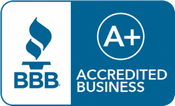
Three Steps to Improve My Business Sales
Published on May 10, 2011
Okay – so you can accuse me of a mis-leading title. This blog post is not directly related to giving you advice on improving your sales as what the heck would I, an accountant by trade, know about your customer? What I can tell you though from listening to TONS of sales and marketing gurus I can summarize in three simple thoughts:
- Spend some time surveying your existing customers to find out why they bought from you.
- Measure, measure, measure your sales pipeline.
- Consider a price increase
On point one, I've heard Dean Minuto from SalesBrain speak about sales and particularly discovering why people buy from you. I'd highly suggest reading some of his thought leadership on this subject. Unless you discover what motivates people to buy from you, you are wasting your time and your sales and marketing dollars – but that's pretty intuitive.
On point two, if you think you have a sales problem you probably do. How do you know if you have a sales problem? Well – quantitatively if your sales are declining you have a problem. But – it is the market and the economy or is it you? The answer is it might be both, but you won't know until you measure the problem. Here's what I'd suggest – and credit for this comes from Keith Eade's company, Sales Performance International (SPI). Keith's team spoke to my Vistage group in Charlotte awhile back and outlined a great process for measuring your sales process. The steps they outline are as follows:
-
If you're not already measuring your sales pipeline using a weighted methodology, start doing so. In other words, assign a 'weighting' to each stage of the pipeline. Examples might be:
- Identify the Target Company – 5%
- Identify the Opportunity – 5%
- Develop the Opportunity – 15%
- Meet with Stakeholders – 40%
- Prove out your Solution – 70%
- Negotiate – 90%
- Close – 100%
- Be realistic in moving things through the pipeline in order to keep it fresh. Consider assigning a target 'maximum days' that something can be at each stage before you move it off the pipeline.
SPI is a big proponent of having verifiable outcomes at each stage – for example your sales person, if moving to a 'develop the opportunity' stage, should be able to produce some type of verifiable document indicating that the prospect is indeed ready to explore the opportunity with your company (e.g. an e-mail from the prospect indicating a desire to meet and take the opportunity forward).
If you start using a weighted pipeline, you'll find that you may not have enough backlog to hit your overall revenue projections. If this happens, you need to create more opportunities, get your existing opportunities moving quicker, or increase the deal size of your opportunities.
Lastly, on point three, consider raising prices. Yes, this stinks and no one really wants to do it. At the end of the day though a modest (e.g. 2% - 5%) price increase probably isn't going to be very noticeable. The alternative is doing more with less, but if you're already at the point where your team is maxed out there's not much you can do at this point. If you are not hearing statements like 'you are very good, but you are very expensive' you probably have room to move. If nothing else your team can focus on fulfilling the needs of customers that absorb the increase rather than focusing on the minority that doesn't absorb the increase.






